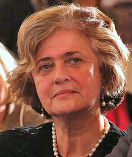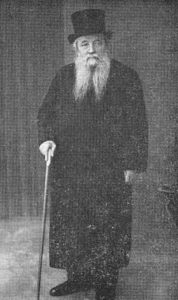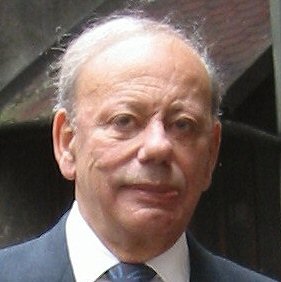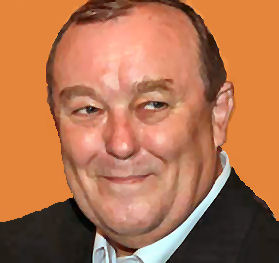"Why Am I Interested in the History of the Jews of Częstochowa?"
by Professor Dr. hab. Jerzy Mizgalski
I am often asked this and similar questions. Sigmund Rolat also asked me this question on 3rd November 2005 at the history symposium connected to the opening of the Jews of Częstochowa exhibition in the Polish Consulate-General in New York. I will answer this question here in the same way that I answered in New York.
It all began when I was searching through various Polish archives for material relating to education at municipal government level during the time of the Second Polish Republic. I ascertained at that time that, among many stored archival documents, there were documents confirming wide-scale educational activities conducted by Jews.
During discussions with my late colleagues, Dr. hab. Janusz Lipiec and Dr. Zbigniew Jakubowski, we decided to examine the issue of Jewish education within the Second Republic.
THAT WAS EASY ENOUGH TO SAY – BUT WHERE TO BEGIN?
From preliminary research, I realised that, at that time (beginning of 1990), very little had been written in the Polish language on this subject. I ended up at the Jewish Historical Institute in Warsaw. There, I met a wonderful man – Zygmunt Hofman. After long discussions with Zygmunt, I was convinced that this very complex issue could not be researched without a deeper study of Jewish history and culture.
The death of Zygmunt Hofman and, later, Janusz Lipiec and Zbigniew Jakubowski, motivated me to even more intensive work. Zygmunt Hofman and Janusz Lipiec, despite their advanced years, and Zbigniew Jakubowski, despite his severe illness, remained extremely enthusiastic for the work until the end of their days. They regarded the statement, preserving memory, not as a short-term slogan, but as a program of serious research.
Janusz Lipiec, a fighter in the Polish underground (ZWZ AK) during the years of Nazi occupation, a prisoner in Pawiak prison, in the concentration camps in Auschwitz and Dachau, strongly reminded me, daily, that the history of Polish Jews is a part of the history of Poland and that the Holocaust was the greatest crime of recent history.
This was a tragedy for the Jewish people and an enormous loss for the whole civilised world, including Poland. The contribution of Jews to the development of the civilised world and to the Polish state cannot be forgotten. To show the truth about Jewish communal life in Poland before the Holocaust is an obligation we owe to those Jews who survived the hell of World War II, something we also owe to the Polish people who, for centuries, welcomed into their land the descendents of King David.
As years went by, I coyly published the results of my research in humble articles. I was concerned, and am still concerned, as to whether I am interpreting the archival documents accurately. Raised within Catholic culture, I neither knew nor understood how Jewish religious traditions are so strongly tied to Jewish daily life.
A NEW MOTIVATION
 A visit to Częstochowa by the great-niece of Chief Rabbi Asz, Professor Elżbieta Mundlak (pic right), gave me a new motivation for the work. Cooperating in the preparation of Elżbieta’s documentary film, I Was Lucky, caused me to research deeply into the history of Częstochowa’s Jewish community. However, the amount of gathered material far exceeded the amount which could be utilised in just one documentary film.
A visit to Częstochowa by the great-niece of Chief Rabbi Asz, Professor Elżbieta Mundlak (pic right), gave me a new motivation for the work. Cooperating in the preparation of Elżbieta’s documentary film, I Was Lucky, caused me to research deeply into the history of Częstochowa’s Jewish community. However, the amount of gathered material far exceeded the amount which could be utilised in just one documentary film.
 A small project then arose under the working title of The World of Rabbi Nachum Asz”. The exhibition displayed the life of Częstochowa’s Jewish community before the Holocaust. Rabbi Asz (pic left), who was a rabbi in Częstochowa for more than 40 years, died in 1936.
A small project then arose under the working title of The World of Rabbi Nachum Asz”. The exhibition displayed the life of Częstochowa’s Jewish community before the Holocaust. Rabbi Asz (pic left), who was a rabbi in Częstochowa for more than 40 years, died in 1936.
His world, namely life in Częstochowa, was the life of a city in which Poles and Jews lived as neighbours. The Jewish community underwent social and cultural changes at the turn of the twentieth century. The intensification of these changes during World War I and during the rebirth of the Polish state made for some very interesting research.
 A variety of cultural life together with social and political diversity among the Jews indicated a lively Częstochowa Jewish community before the tragedy of the Holocaust.
A variety of cultural life together with social and political diversity among the Jews indicated a lively Częstochowa Jewish community before the tragedy of the Holocaust.
Elżbieta introduced me to Sigmunt Rolat (pic right), a Jew formerly from Częstochowa. The result of these discussions was the birth of the idea to create a larger exhibition The Jews of Częstochowa.
SO, TO ANSWER THE QUESTION … why I chose this subject of research, I can state:
1. To better understand others and myself.
2. To try, as much as possible, to accurately explore the life of the generation which preceded my own generation.
3. To draw attention to the fact that multiculturalism and life with multicultural tolerance is too little. It is still possible to live side by side and still not understand each other.
4. Transcultural recognition and understanding the differences also helps me to recognise and understand my own culture – the one in which I grew up. I am a Pole. My grandparents and parents were Catholics with a deep faith. I grew up in this culture. I am also a believer and, in accordance with the historic words of John Paul II about “older brothers in faith”, the culture and life of this society deserves to be recognised, having lived together with my grandparents’ and parents’ generations. Together, they built a future for their children and grandchildren.
5. In order to better recognise and understand the tragedy of the Holocaust. It is too little to merely speak and write about it. We must acknowledge this world which was destroyed by the Holocaust, the huge contributions to life made by entire generations of Jewish families, their contribution to the culture of the world, to Poland, as well as to my own city of Częstochowa and its surroundings; a society which was the target of not only annihilation, but also attempts to wipe it from the world’s memory. The Exhibition, as well as the Album, endeavours to show the spiritual and material richness of Częstochowa Jewish society that was brutally interrupted by the Holocaust. We have divided it into several sections which have been clearly designated in both editions of the Album The Jews of Częstochowa. This kind of concept better depicts the multifaceted and varied richness of Częstochowa Jewish society. What remains today is not quite 200 Jews living in Częstochowa. Centred around their cultural association, social gatherings take place once a month. Before World War 2, the Jews represented one-third of Częstochowa’s inhabitants.
6. To provide today’s young generation with a picture drawn from the many broken threads of life of generations of families living with their own traditions and culture, but which also contributed much materially and culturally to our city, region and country. Ideological blindness (the only explanation of the facts), which I clearly document, causes homo sapiens to not only disregard another person, but to also endeavour to destroy his traditions and culture and to eliminate him from memory with ideological slogans. Hostility, built upon the subsoil of this ideology, is close to the tragedy of the Holocaust. For the present generation of the 21st Century, I consider this message to be the most important. No ideology or religious interpretation and justify this outrage against humanity.
May the destroyed lives of the victims of World War II cause us to reflect and serve as a warning. A major reason for researching a culture is to serve as a warning, to all ideologues and politicians, that human life combines not only one’s own life, but also one’s society and that of one’s nation.
The divine commandment that thou shalt not kill applies to all religions and to all societies.
The article on this page
was written by

Prof. Dr. Hab. Jerzy Mizgalski
Historian,
former Vice-Chancellor of the
Jan Długosz University and
one of our Exhibition’s creators.
